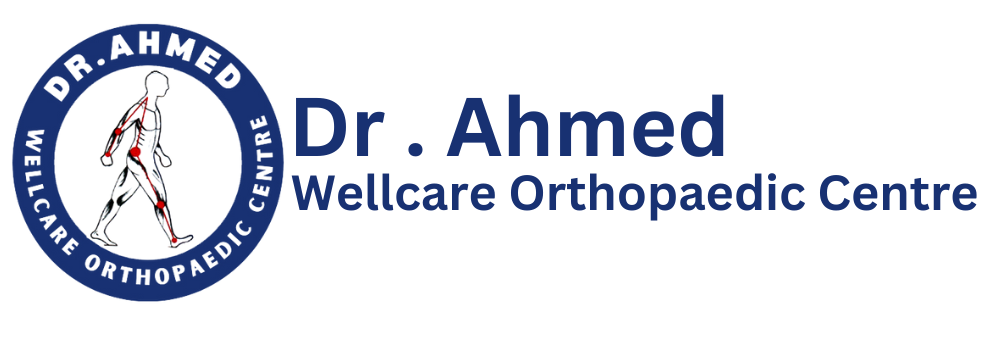What is a Meniscus Tear?
The meniscus consists of two crescent-shaped cartilaginous structures located in each knee joint, serving as crucial components for knee stability and mobility. It acts as a shock absorber between the thigh bone (femur) and the shin bone (tibia), distributing weight and reducing friction during movement. A meniscus tear refers to damage sustained to these cartilaginous pads, which can significantly affect knee functionality.
Meniscus tears are classified into several types, depending on their location and severity. Common types include horizontal, vertical, and complex tears. Horizontal tears occur parallel to the meniscal surface. Vertical tears, also known as longitudinal tears, run vertically along the meniscus. Complex tears combine various tear patterns and may affect both the outer and inner regions of the meniscus. Symptoms of a meniscus tear typically include swelling, pain near the joint line, stiffness, and difficulty in bending or straightening the knee. In some cases, individuals may experience a sensation of “locking” or “catching” in the knee.
Meniscus tears frequently arise from sporting activities, especially those involving twisting motions, such as soccer or basketball. Degenerative conditions, often linked to aging or repetitive stress injuries, may also contribute to these tears in older adults. Due to the complex nature of knee injuries and the variability in symptoms, seeking medical attention is paramount for accurate diagnosis and effective treatment. Proper assessment, either through physical examination or imaging studies like MRI, will aid in determining the most appropriate path forward, including understanding how long does it take a meniscus tear to heal and the implications for recovery.
Factors Influencing Healing Time
The healing time for a torn meniscus can vary significantly based on several influencing factors. One of the primary determinants is the severity of the tear itself. Meniscus tears are classified into different grades, ranging from minor partial tears to more severe complete tears. Generally, a partial meniscus tear may heal faster, potentially within a few weeks, while a complete tear could necessitate a longer recovery period, possibly extending several months. Therefore, one of the key elements in assessing how long does it take a meniscus tear to heal is an understanding of the specific type of tear and its classification.
Another critical factor is the age and overall health of the individual. Younger individuals typically possess a greater capacity for healing due to increased blood supply and tissue regeneration abilities. Conversely, older adults or those with pre-existing conditions may experience prolonged recovery times. Similarly, a person’s overall fitness level and commitment to rehabilitation can significantly impact healing speed. Rehabilitation protocols must be followed diligently to regain strength and mobility effectively; non-compliance can lead to setbacks.
The treatment method chosen also plays a crucial role in determining how long it takes to heal from meniscus surgery or conservative management such as physical therapy and rest. Surgical intervention typically has a longer recovery period, but it might provide a faster, more effective resolution of symptoms in severe cases. Additionally, some patients may opt for non-surgical methods, which can lead to faster initial recovery but could result in a long ger overall process if the pain persists or further intervention is required. Collectively, these factors create a complex landscape in understanding how long does it take meniscus to heal, highlighting the need for personalized treatment plans for affected individuals.
Typical Healing Times and Recovery Guidelines
The healing times for a torn meniscus can vary significantly depending on the type of treatment received. When managing a meniscus tear without surgery, the general recovery period is around 4 to 6 weeks. Individuals often begin physical therapy within this timeframe, which focuses on restoring range of motion and strengthening surrounding muscles. However, it is essential to note that the recovery process can be influenced by various factors, including the severity of the tear, the patient’s age, overall health, and adherence to rehabilitation protocols. Additionally, certain lifestyle choices and activity levels can also extend the healing duration.
For those undergoing surgical intervention for a meniscus tear, recovery times vary. After a meniscectomy, where part of the damaged meniscus is removed, healing typically takes about 4 to 6 weeks. In contrast, meniscus repair often requires a longer recovery period, usually 3 to 6 months, due to the surgical nature and the healing process involved.
In the early stages post-surgery, patients follow a structured rehabilitation plan. This often starts with rest and gentle movements, gradually progressing to strength training and more active exercises. Managing swelling and pain is essential, as it can impact healing time. Keeping up with follow-up appointments is crucial for adjusting recovery plans based on individual progress and treatment responses.
Tips for Effective Recovery and Prevention
Recovery from a torn meniscus is a vital process that can significantly affect how long it takes for the injury to heal. There are several strategies that individuals can adopt to ensure optimal healing. Firstly, engaging in physical therapy exercises is essential. These tailored exercises aim to improve strength, stability, and flexibility in the knee joint, which can facilitate a quicker recovery. Often, these programs are designed to slowly reintroduce movement to the affected area, allowing individuals to regain functionality and potentially shorten the duration of the healing process.
Alongside physical therapy, adequate rest plays a critical role in recovery. It is important to avoid overloading the knee during the healing period. Taking breaks and refraining from activities that exacerbate pain can significantly aid the healing process. Additionally, applying ice to the injured area can help reduce swelling and provide pain relief. A recommended practice involves icing the knee for 15-20 minutes several times a day, especially immediately following any activity that may cause discomfort.
Nutritional support is another key aspect of recovery. A balanced diet rich in vitamins and minerals can enhance the body’s natural healing capabilities. Foods high in omega-3 fatty acids, antioxidants, and protein can be particularly beneficial. Along with this, staying hydrated is vital for maintaining tissue health and aiding recovery.
Prevention is equally important in avoiding future meniscus injuries. Strengthening exercises targeting the leg muscles can provide additional support to the knee. It’s essential to include a thorough warm-up before any physical activity. This prepares the muscles and joints, reducing the risk of injury. By combining effective recovery strategies with preventive measures, individuals can speed up healing and protect themselves from future knee issues.
Frequently Asked Questions?
Q. What is a meniscus tear, and how does it happen?
Ans. A meniscus tear occurs when the cartilage in the knee, which cushions the joint, is damaged. It often results from twisting the knee, sudden stops, or degeneration due to aging.
Q. What are the symptoms of a torn meniscus?
Ans. Symptoms typically include knee pain, swelling, stiffness, difficulty moving the knee, a popping sensation, and a feeling of the knee locking or giving out.
Q. How long does it take for a torn meniscus to heal without surgery?
Ans. Small tears may heal in 4 to 6 weeks with rest, physical therapy, and conservative treatment. However, healing time can vary depending on the tear’s location, size, and severity.
Q. Can a meniscus tear heal on its own?
Ans. Some small tears, particularly those in the outer third of the meniscus (where blood supply is better), can heal on their own with rest and therapy. Larger or complex tears may not heal without surgical intervention.
Q. What is the typical recovery time after meniscus surgery?
Ans. Recovery from arthroscopic meniscus repair can take 3 to 6 months, while a partial meniscectomy (removal of the damaged part) may have a shorter recovery of 4 to 6 weeks.
Q. How soon can I return to normal activities after a meniscus injury?
Ans. For non-surgical treatment, patients may resume light activities after a few weeks, depending on the severity of the tear. After surgery, it may take several months to return to sports or strenuous activities.
Q. What factors affect the healing time of a torn meniscus?
Ans. Factors include the tear’s location, the patient’s age, the extent of the injury, and the treatment approach (surgical vs. non-surgical). Proper rehabilitation and adherence to post-treatment protocols also play a role.
Q. Do I need surgery for a torn meniscus?
Ans. Not all meniscus tears require surgery. Doctors typically recommend surgery if conservative treatment fails, or if the tear causes significant pain, instability, or joint locking.
Q. Will physical therapy help in healing a torn meniscus?
Ans. Yes, physical therapy is essential for strengthening the muscles around the knee, improving range of motion, and reducing stress on the joint to promote healing, whether or not surgery is required.
Q. What are the risks of delaying treatment for a torn meniscus?
Ans. Delaying treatment can lead to worsening pain, further damage to the meniscus, and potential degeneration of the knee joint, increasing the likelihood of long-term issues like osteoarthritis.









